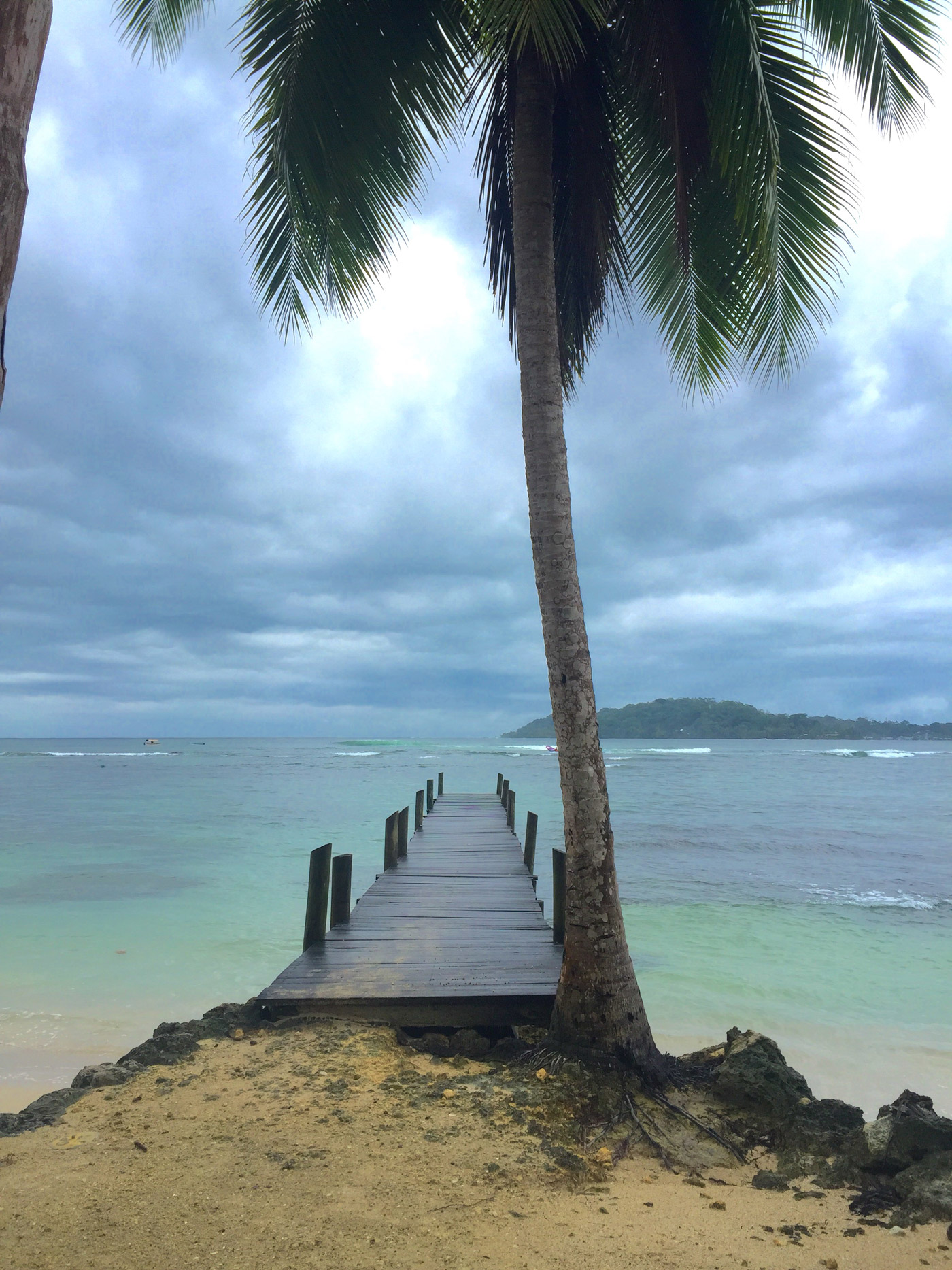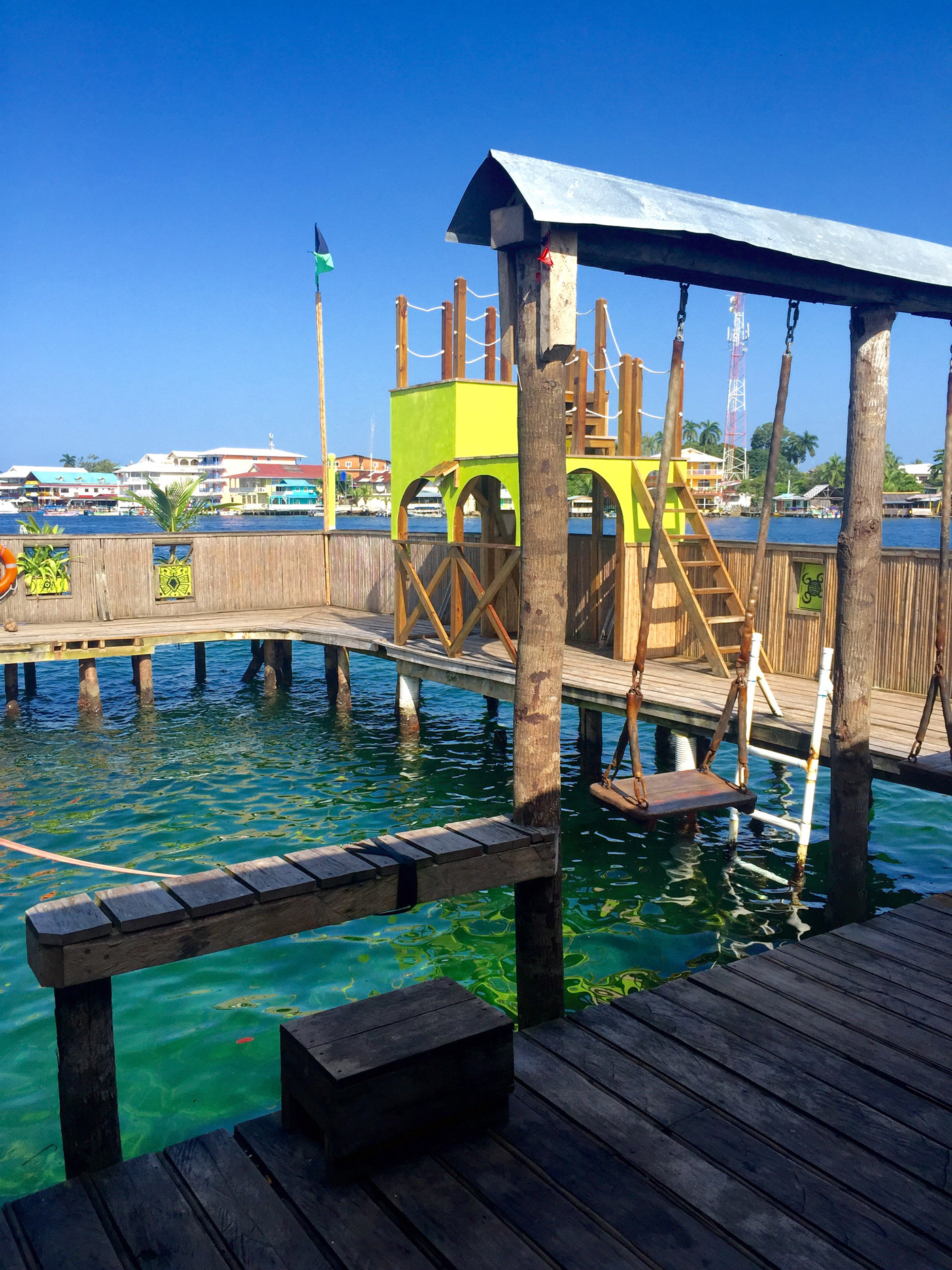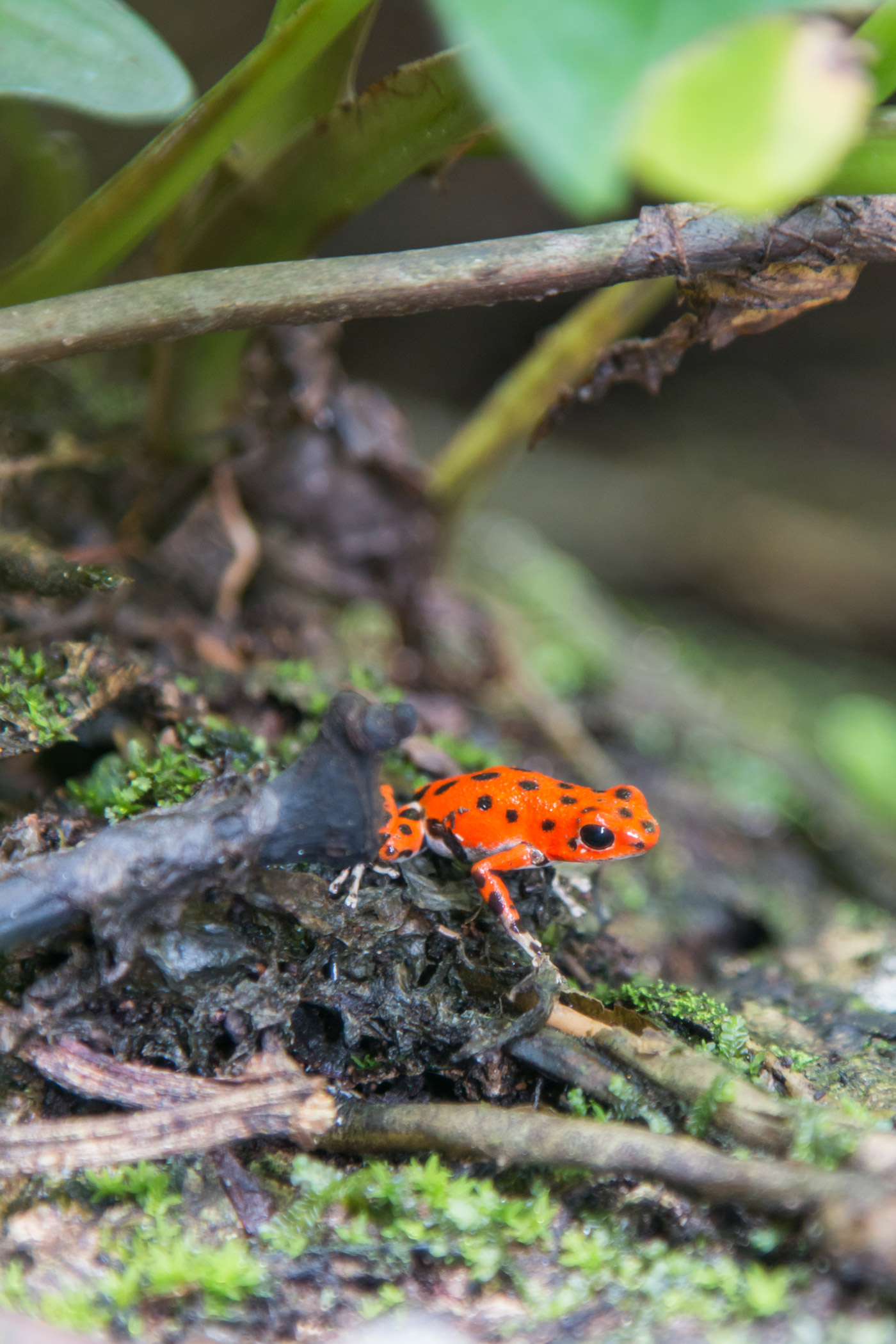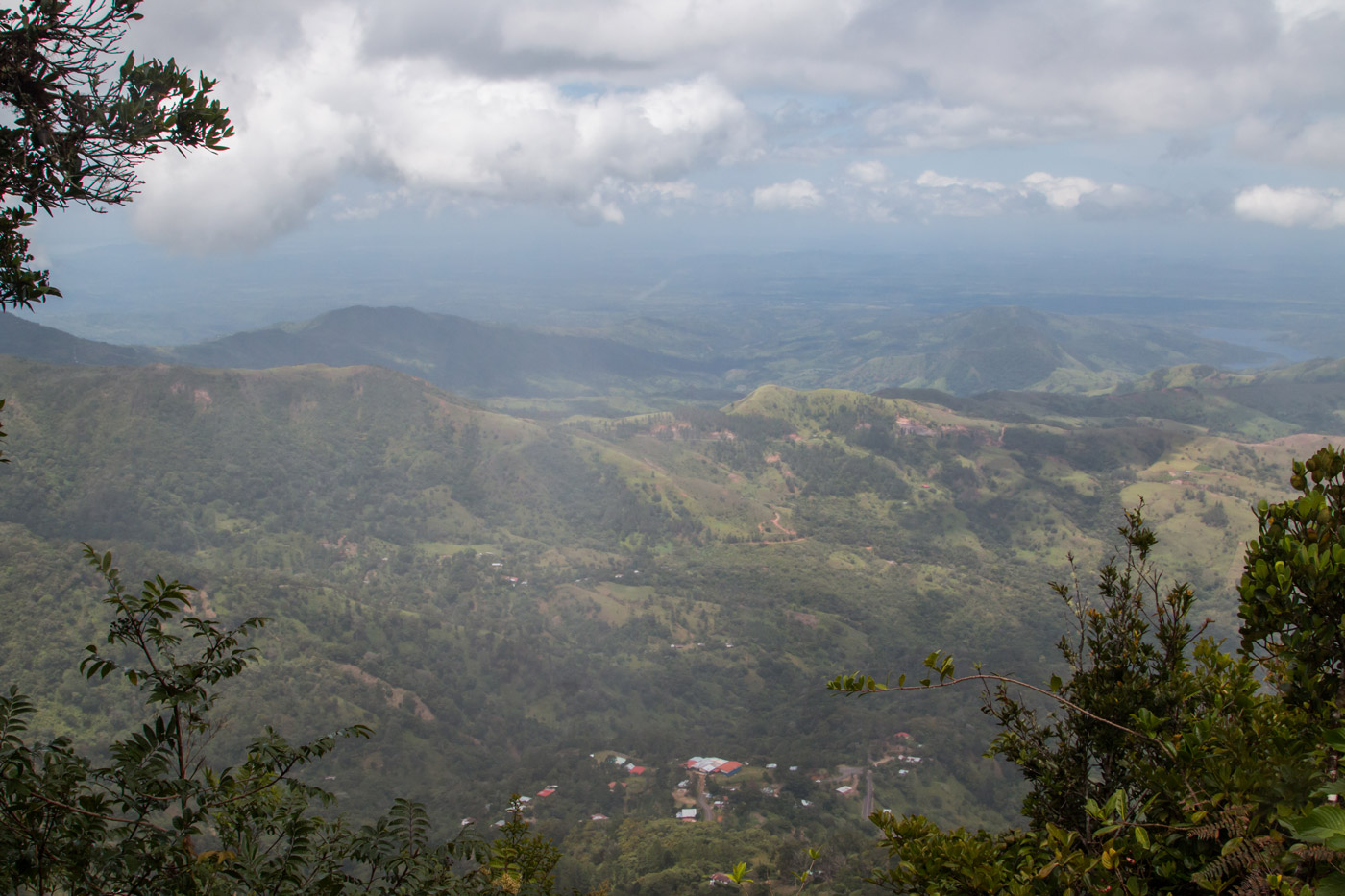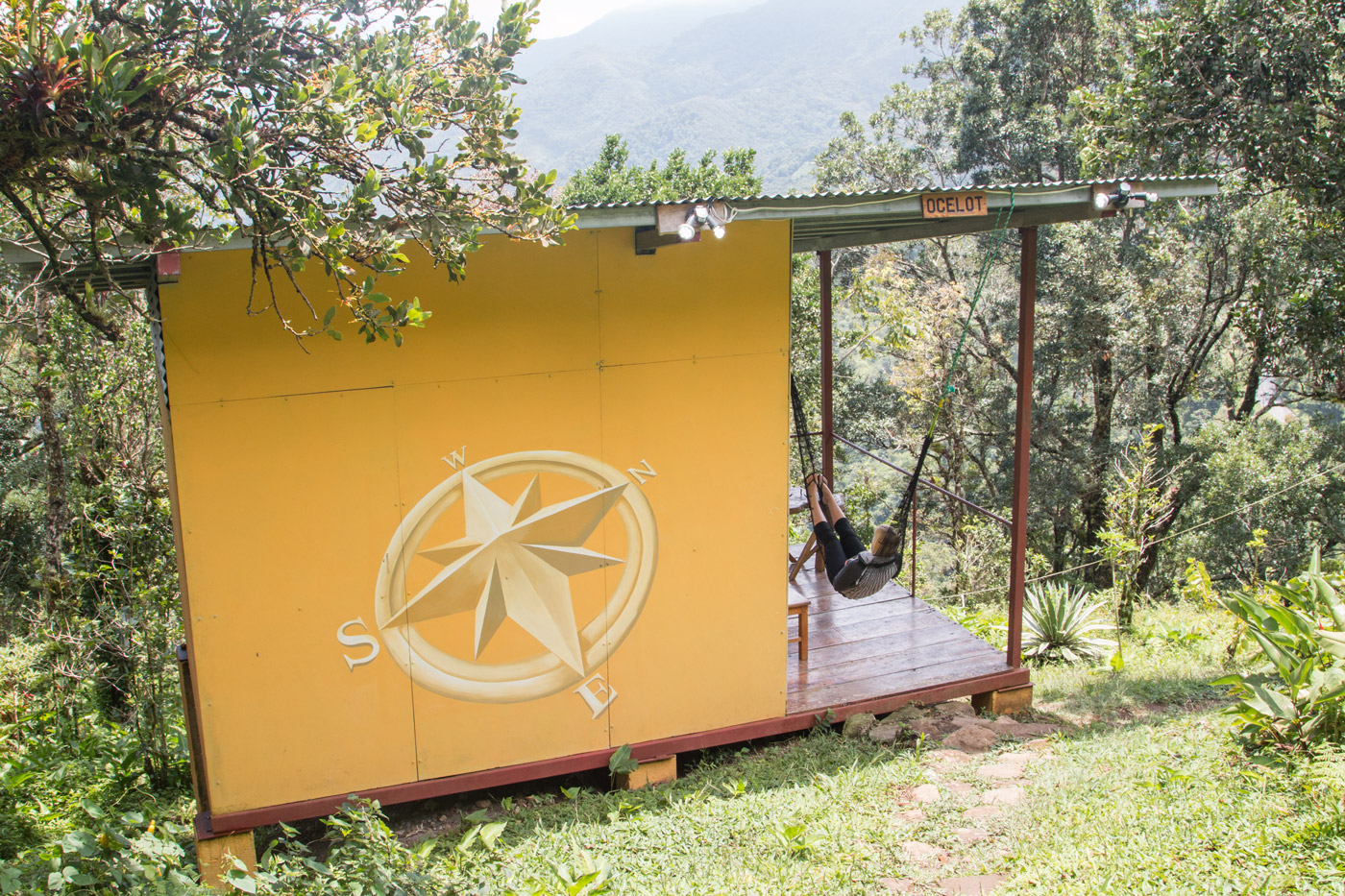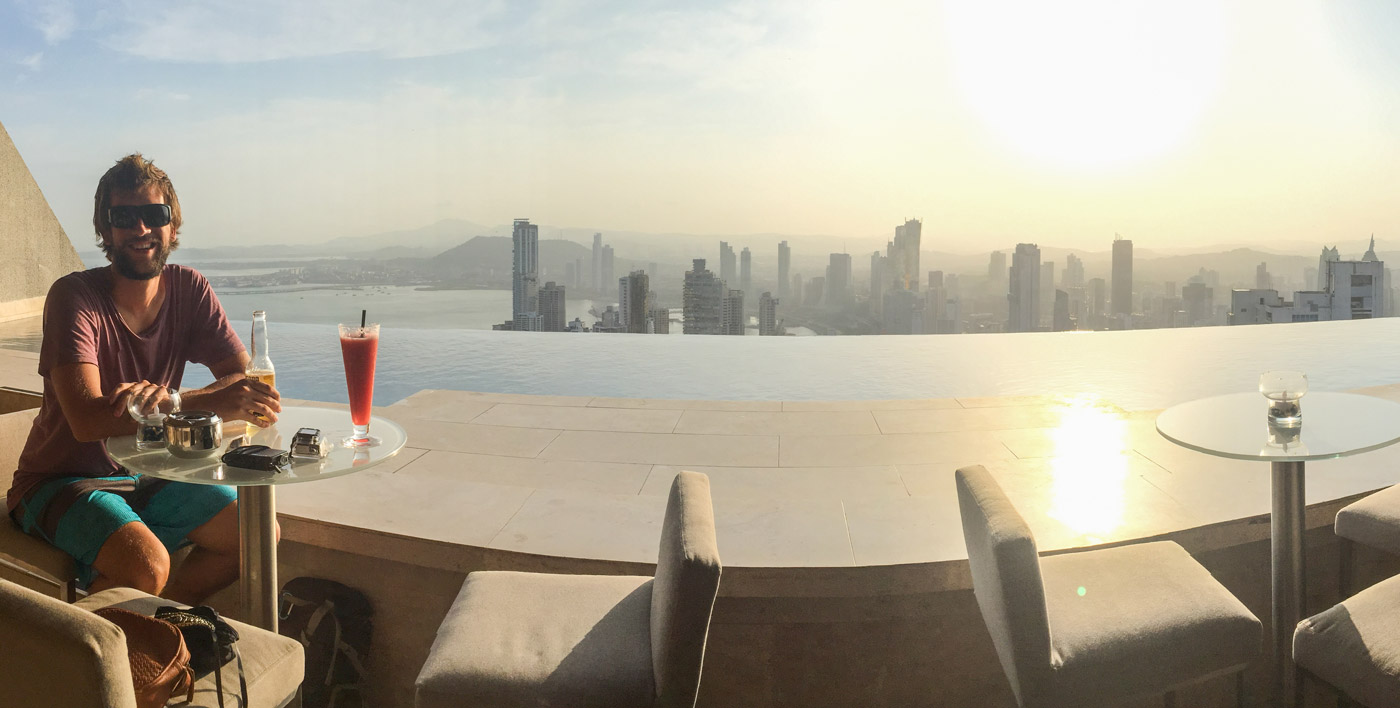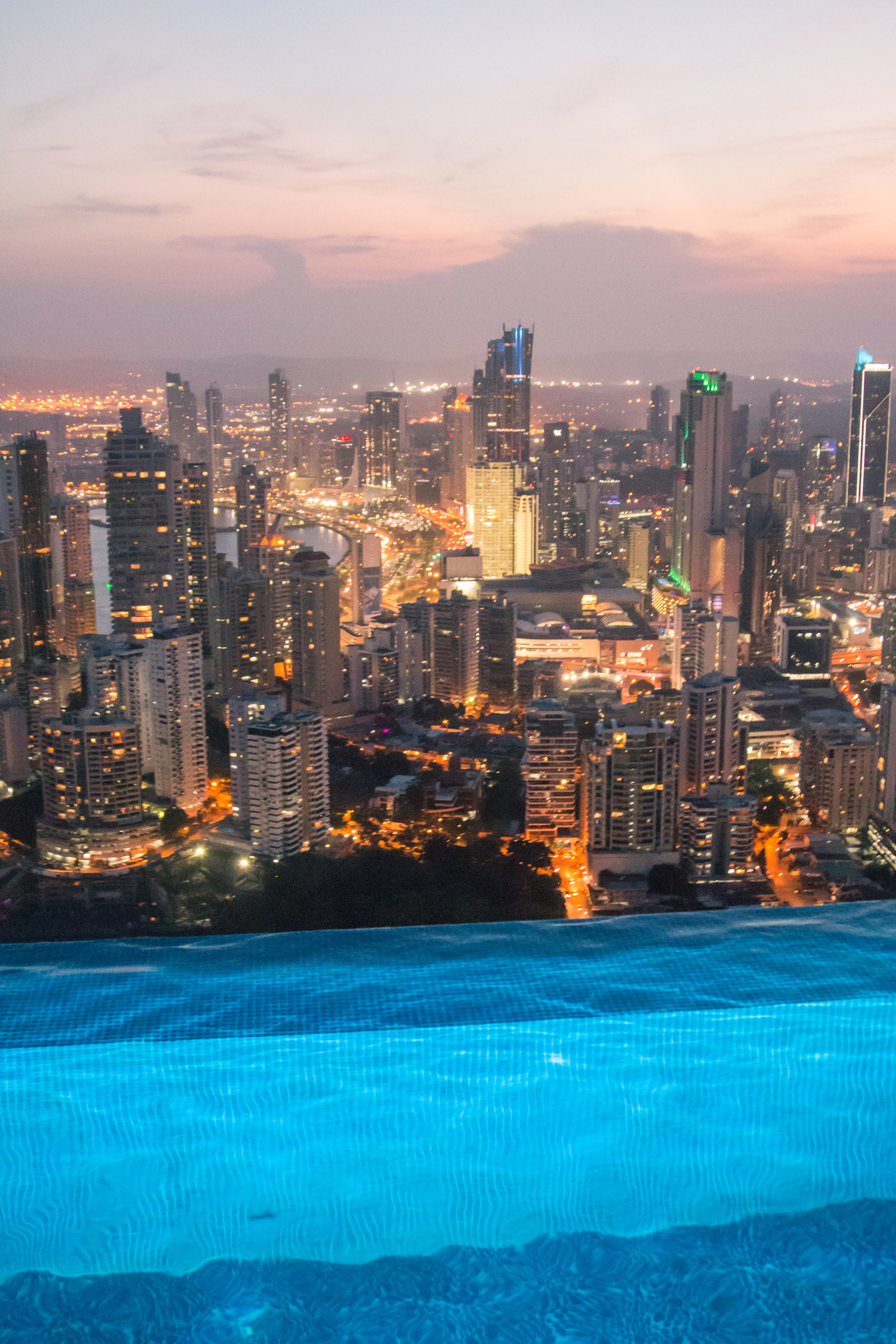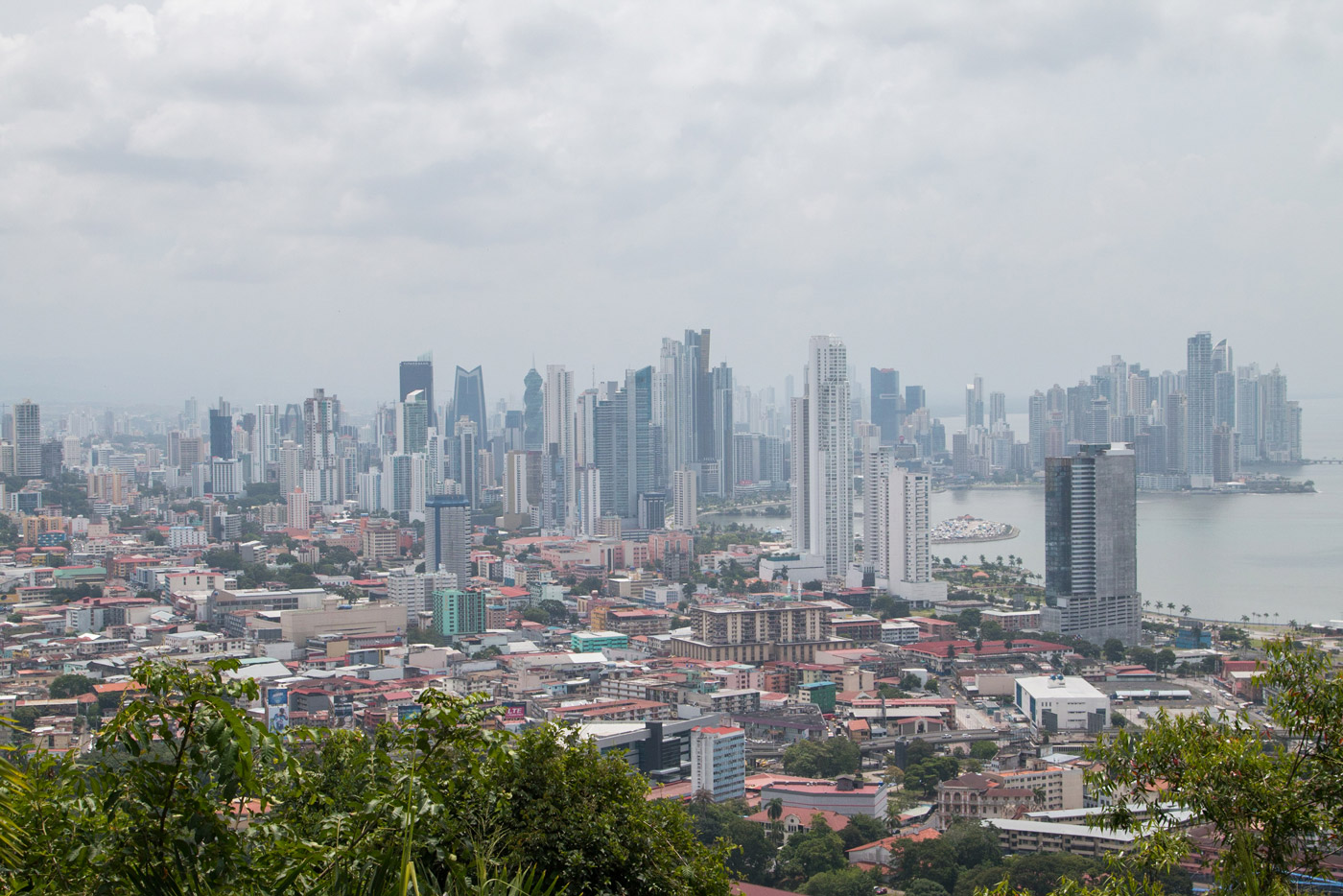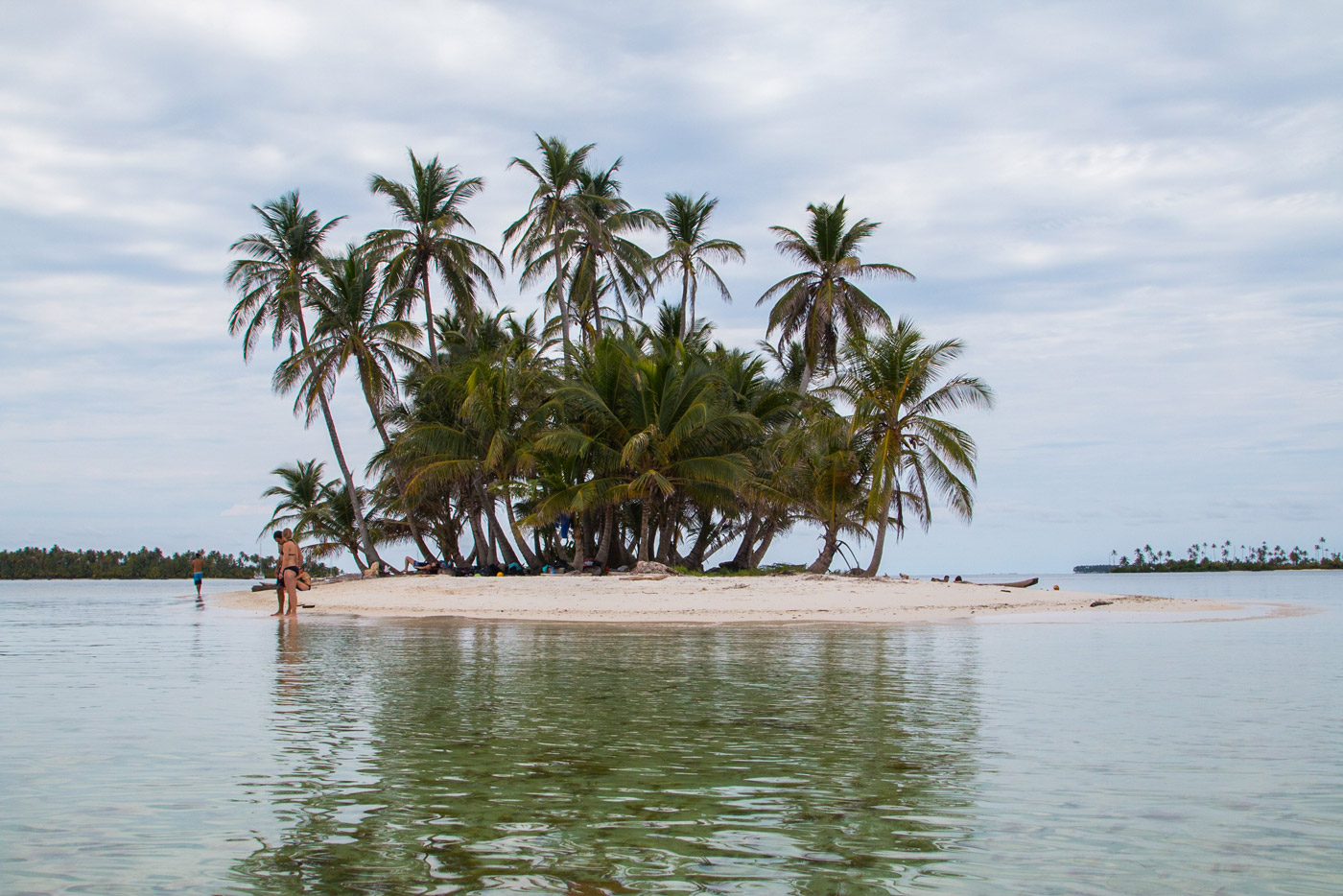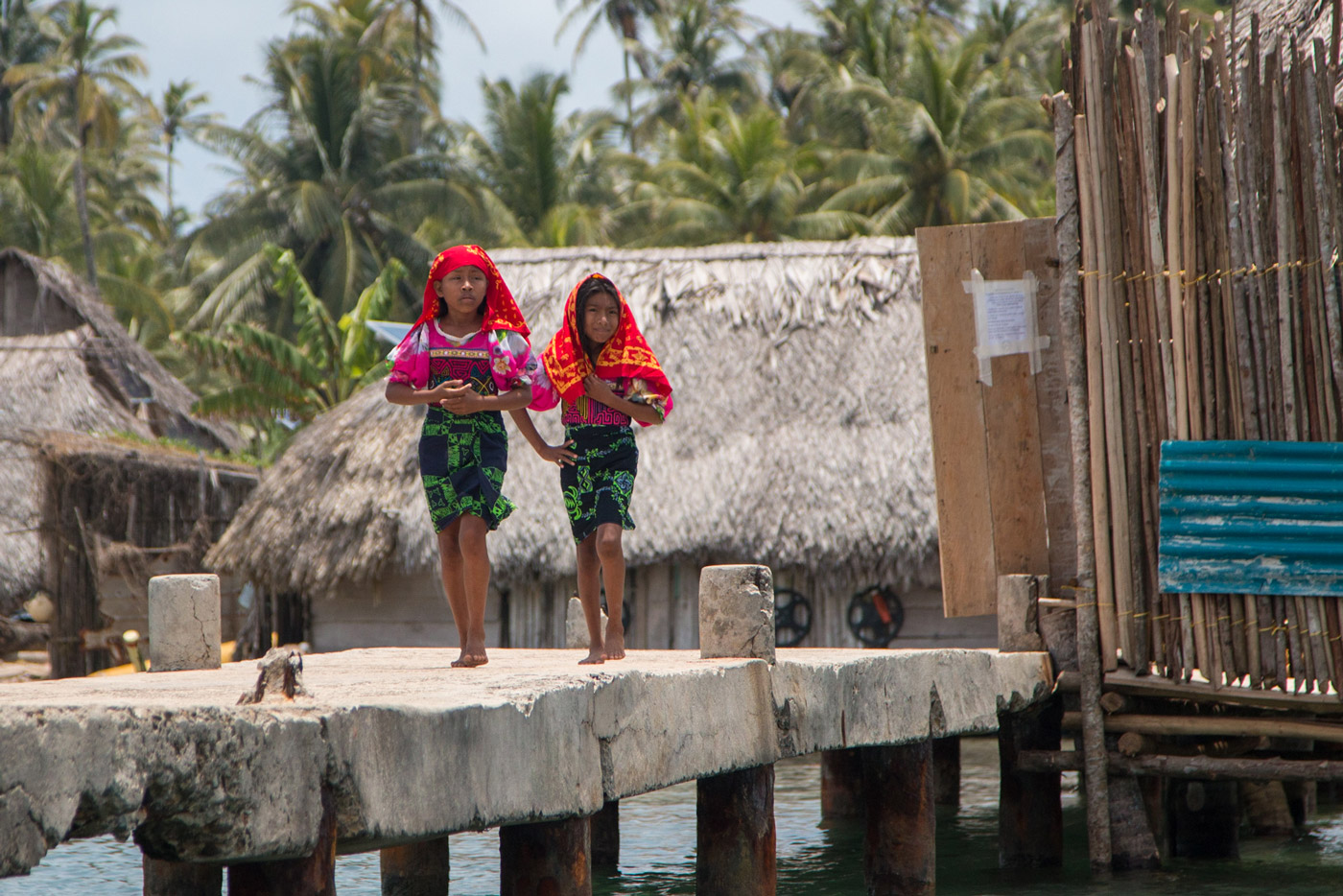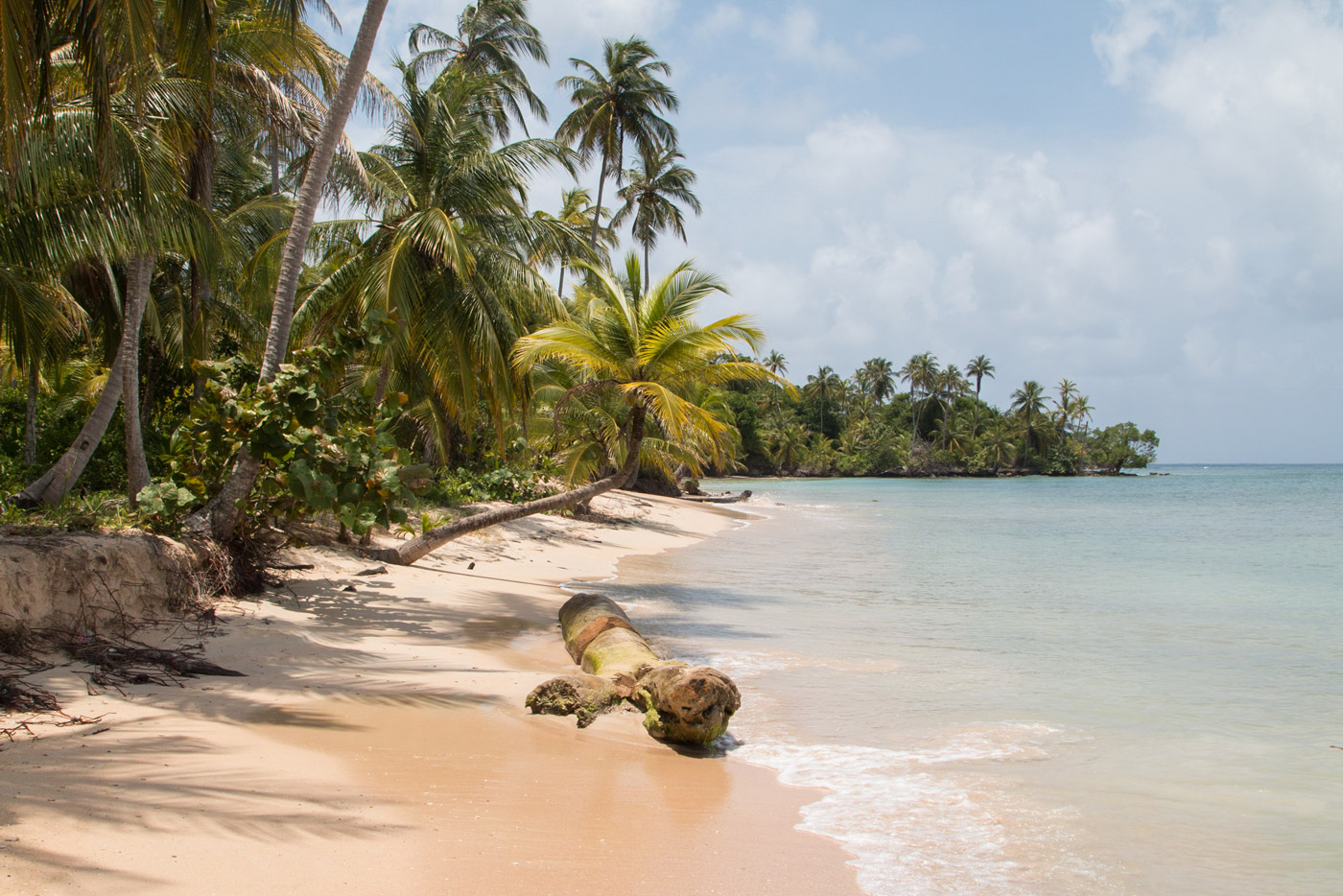The border crossing out of Costa Rica and into Panama was an unnecessarily painful yet typical experience for a Central American land border. After avoiding the assistance of the young guys trying to “help” with our bags and lead us towards shops, we made our own way to the most official looking building we could find in an area of dirt roads and stray dogs. We stood in the heat in line at immigration for a while only to learn that what the non-uniformed guys had been telling us was true and we did need to hand our passport over and pay an exit tax to a shop in the town that sold fried chicken and dodgy looking hotdogs in order to get a stamp and be allowed to leave. With our bags on our backs we walked across the border on foot, crossing a bridge over the river that divides the two countries. Now on the other side of the river we had exited Costa Rica, though we were far from finished with pointless processes.
In what seemed to be an exercise in both job creation and powertripping there were three different checkpoints before being allowed to officially enter Panama. With no distinct path or signs throughout the whole process it was on you to walk around the border town and make sure you had the correct documentation and stamps before continuing to ensure you had no trouble in the future when you went to leave. Their request for proof of onward travel for each person threw us but my quick thinking to show a receipt email Lauren had forwarded me was enough to be allowed to pass, even though it had no names on it and three guys in front of us had just been rejected for equally having no proof. Elsewhere in another unmarked area we were required to pay an entrance fee, though Lauren and I paid a different price despite it being to the same guy. Moving on, we filled out yet another form and finally we had reached the final level in what seemed like a frustrating game and were able to show our passports and be on our way.
Bocas Del Toro
We shared a van with some other backpackers away from the border and a couple of hours south to the dock before all catching a boat together from the mainland to the islands of Bocas Del Toro. This palm tree filled tropical island paradise in the Caribbean was to be our next stop.
After checking in to our hostel and enjoying the air conditioning, we coincidentally met back up with the group on the wharf at the beach and went for a swim before watching the sunset and organising to catch up later that night for dinner and drinks.
At dinner we all took advantage of the cheap 2 for 1 drink special, overwhelming the girl behind the bar by each ordering multiple sets of two drinks rather than sharing the second one with a friend like they expected us to do. Moving on to a nightclub in town we danced and drank on the deck hanging over the water until the early hours before finding some late night snacks and getting a taxi home.
Hungover and tired, Lauren and I surfaced late the next morning. We found a public bus and spent the rest of the day at Playa Estrella (starfish beach). We walked around to a quiet part of the beach and had an area to ourselves to float around in the calm water for a couple of hours curing the hangovers and taking photos with the starfish. A couple had warned us they had only seen one starfish but I’m not sure what their problem was because in our area alone we spotted over twenty without really trying or venturing far from shore.
With a rainy day keeping us inside for most of a day and some flexibility in our schedule we decided to extend our stay and move over to another hostel, Aqua Lounge, for another three nights. This hostel was on another nearby island and built completely over the water with pools cut into the deck and swings, a slack line and jumping platforms all to jump off.
We took a boat over to another island to visit Red Frog beach and were lucky to have the sun and blue sky come out not long after getting there. I went for a swim in the surf, enjoying having both the warm water of the Caribbean and some decent waves as Bocas is not as sheltered by reef as some of our other stops in the Caribbean such as Belize and Little Corn Island (Nicaragua). We walked along the beach where the sand met the jungle in search of a red frog but being both unsure on their size and where to look we came up empty handed and a little disappointed. We stopped into a restaurant on the island for lunch and as luck would have it there was a frog right near the door step!
That night our hostel held a big party and with the others coming to join us we ended up having a good sized group to have another big night of drinking and dancing. We took advantage of the free drinks for ladies night with Lauren getting both of us plenty of free rum.
A couple of days later we took a boat trip for the day around the islands spotting dolphins and sloths along the way. By lunchtime the sun was out and we stopped at Zapatillas Island for some lunch, a swim and to explore the island. The final stop of the tour was yet another island for some snorkelling and deep sea boarding, an activity I had heard about and was very keen to try. It involved being towed behind the boat holding on to a clear perspex board and wearing the snorkelling goggles. By changing the angle of the board you could turn left or right as well and dive down under the water for as deep and as long as your breathe allowed before racing back to the surface. Once I got the hang of it I was doing multiple spiralling turns underwater as well as repeatedly equalising my ears to get deeper and deeper. Lauren surprised both myself and the guide and despite asking countless nervous questions beforehand she did really well, spending most of the time also playing around underwater instead of staying on the surface like many others.
Lost and Found
Our next stop on our journey south was Lost and Found hostel, described as a jungle hostel in the clouds. And in the clouds it was, the place is located high in the mountains in the middle of nowhere and its remoteness is increased by the fact it is only accessible by foot. The bus driver dropped us off on the side of the road and pointed uphill and so we walked the 20+ minutes straight uphill in the jungle carrying our bags on our back and cursing the whole way in the heat. On getting checked in we were greeted with great views across the valley.
Building a hostel in the jungle, far away from any civilisation, seemed like both a gamble and logistical nightmare considering everything needed to be carried in by hand from building supplies and one off items such as fridges to near daily supplies such as beer and food. Even more surprising was that this place managed to have hot showers, something we haven’t really had for close to four months! The location seemed to be working however and was seen as a convenient and popular stopping point for travellers making their way from Bocas Del Toro to Panama City.
The place had a friendly atmosphere with the common area offering the best view along with large tables for everyone to sit together, chat and enjoy the nightly “family” dinners. We met a group that had been travelling together for a while and after going through the usual “where are you from?” questions we were surprised to find one of the guys grew up a few streets away from Lauren and we have many common friends. The group were heading in the same direction as us and as it turns out we ended up meeting back up with them several times along the way.
The following day was my birthday, and whilst it was not the first time I had been overseas for my birthday, spending it in a remote spot in the jungle was something different entirely. One of the biggest drawcards for Lost & Found is their treasure hunt, taking you self-guided through the jungle as you follow clues conveniently between all the attractions in the area from high lookouts to swimming in the cool, fresh river. This was the day’s birthday activity with Lauren and I definitely doing more of the “Lost” part than the “Found”. We finished Part 1 and were satisfied with our efforts returning to the hostel for some beers and dinner. Lauren, not wanting to be outdone by her past years birthday celebrations, decided (optimistically) that she would secretly bake me a cake with ingredients sneakily purchased back in Bocas. Little did she know that the hostel did not have an oven for the guests and the mixture did not come with icing. Impressively, still keeping it a secret, she managed to enlist the help of some local Panamanian ladies working in the kitchen and through both basic Spanish (“mi cumpleaños novios” / “my boyfriends birthday”) and some charades a cake was cooked and iced. I even noted the attention to detail with a toy globe placed on top with Central and South America facing up. We shared the cake with our new friends and then moved the party to the bar for a big night of birthday shots and beers before stumbling in the dark back down the rock path to our room.
As we were staying over my birthday we had decided to “splurge” on a private room and were impressed to have our own, albeit basic, standalone cabin overlooking the valley complete with a small verandah and hammock.
Panama City
Panama city is the most modern city not only in Panama but the rest of Central America. We were surprised to see its dense skyline filled with skyscrapers for big brand companies and fancy apartment blocks. We stayed in Casco Viejo, the historical district of Panama City and a World Heritage Site. It is made up of colonial style buildings in various states of restoration with the colourful Spanish/French influenced buildings and their overhanging balconies lining the streets. In a way it reminded me of the French quarter of New Orleans.
As an extension to my birthday celebrations Lauren had another great day planned for me around Panama City. We started by exploring the interesting streets of Casco Viejo before arriving at the fish markets to eat fresh cups of ceviche. For the afternoon we headed 66 floors up to the Trump Ocean Club to enjoy watching the sun set over the city while swimming in an infinity pool perched on the side of the building. It was amazing to watch the city lights come on in such a modern looking city and was hard to believe we were still in Central America and even more so that they would let a shaggy looking backpacker into the place. We moved down to a fancy restaurant on the water for a nice dinner to finish off what was a rare, classy afternoon and evening.
We were excited to find the city featured multiple large, modern shopping malls and having not seen anything like this for at least four months we stocked up on things we had worn out and needed. It was also a nice relief to be in air conditioning and escape the heat.
The Panama Canal is still regarded as one of the world’s greatest engineering feats some 100 years after it was completed and is one of the most visited attractions in Panama. The canal connects the Pacific Ocean with the Atlantic and allows ship routes to connect faster to the majority of the world. The locks at either end lift huge container ships 26 metres above sea level to allow them to pass through the country before lowering them again at the other side. We visited the Miraflores locks, which is one of the better viewing positions to see ships pass through the three levels of locks. We actually found it interesting and spent some time afterwards looking through the museum at the visitor centre.
On our final full day in Panama we took a walk up to Cerro Ancon for panoramic views of the city and canal.
San Blas Islands
The Darien Gap is a 160km break in the 48,000km Pan-American Highway spanning the top of North America to the bottom of South America. It separates Panama and Colombia and is regarded as one of the most inaccessible and hostile jungles in the world making an overland journey impossible. Flying from Panama to Colombia is the obvious solution however another more exciting alternative is island hopping by boat down through the San Blas islands.
The San Blas Islands are a group of approximately 365 islands along the warm Caribbean coast of Panama, of which only 49 are inhabited. We had opted for the speed boat version of the trip meaning we had more time on the islands and less time on the boat. Our group consisted of 26 people and we all quickly bonded on our first island stop over shared bottles of rum while sitting in the shallow, clear waters of the Caribbean surrounded by empty islands and palm trees.
Moving south through the islands towards Colombia our days consisted of at most two hours worth of travel before arriving on a new, uninhabited island in time for lunch. The rest of the afternoon was spent swimming, snorkelling, and drinking beers and rum on the beach. We played plenty of Beersbee, a simple frisbee based drinking game that got everyone involved and one I can’t wait to introduce back home.
We slept on a different island each night in hammocks, which was something I had been looking forward to but unsure how comfortable it would be. I love some good hammock time and I’d had plenty of it relaxing and napping throughout Central America but never for a proper nights sleep. Turns out with the right technique (hint: diagonally) you can get a great sleep and not wake up with your back bent in half. By the third night we were experts though the countless amount of drinks each night definitely helps get you to sleep.
The Kuna are the indigenous people of Panama and mostly live on various small islands throughout the San Blas. It was with their permission that we stayed with them on the islands and got to experience some of their way of life. The women dress very traditionally in colourful handmade dresses and jewellery covering their arms and legs. We were told they even use coconuts as an additional form of currency to trade with passing Colombian boats to fulfill coconut shortages in Colombia.
Naturally, being in the middle of the Caribbean, our meals were mostly seafood. Everyone was thrilled when on the first night we were told it was pretty much all you can eat lobster. The guides were surprised when the group eventually got through the giant mound. I wasn’t, I had 8…
The following day a friendly local Kuna man paddled his canoe over to us on an island and sold us another ~30 live lobsters for about $40 so it was more lobster as a side course for dinner that night too.
On our final day we arrived at Isla Pino to spend the day on the most picture perfect beach yet. Bright blue water met white sand lined with palm trees. We floated around in the water for most of it, taking time out to drink from fresh coconuts and take photos.
That night we stayed in a Kuna village and were shown around by a local guide. The Kuna are quite autonomous and private people and have largely resisted Hispanic integration. The adults will often hide from having their photo taken though the kids still enjoyed saying hello, playing with us, and giving high fives. We were very fortunate to arrive during cultural week and in what will likely be a once in a lifetime opportunity were invited into their ceremonies under strict instructions that we could not take photos. What started out with our group respectfully watching from one side quickly changed to being pulled into the celebrations. The males from our group joined the Kuna men as they took turns chanting and dancing before being presented with a half coconut shell of Chicha Fuerte, a traditional alcoholic drink consisting of fermented sugar cane, chocolate and coffee. The taste was strong and hard to skull however after our third or fourth turn each we got used to it. On the other side of the room Lauren took part in the women’s equivalent, though as expected it was far more civilised. Later in the night we learned we were even luckier as not only had our night’s visit been during cultural week it had coincided with another important traditional celebration. If a family can afford it they will throw a party for the whole village when their daughter becomes a woman. That’s right you read that correctly, we were celebrating what we had dubbed our very first, and likely our last, Period Party! Everyone appeared to have a great time and even our guide said he’d never experienced this on a trip before.
The next morning still wobbly from a great party we all hazily piled into the boat headed for the Colombian border. And just like that we crossed not only into a new country but into a different continent. This marks the end of our four months in Central America as we seek new and exciting adventures in South America.
